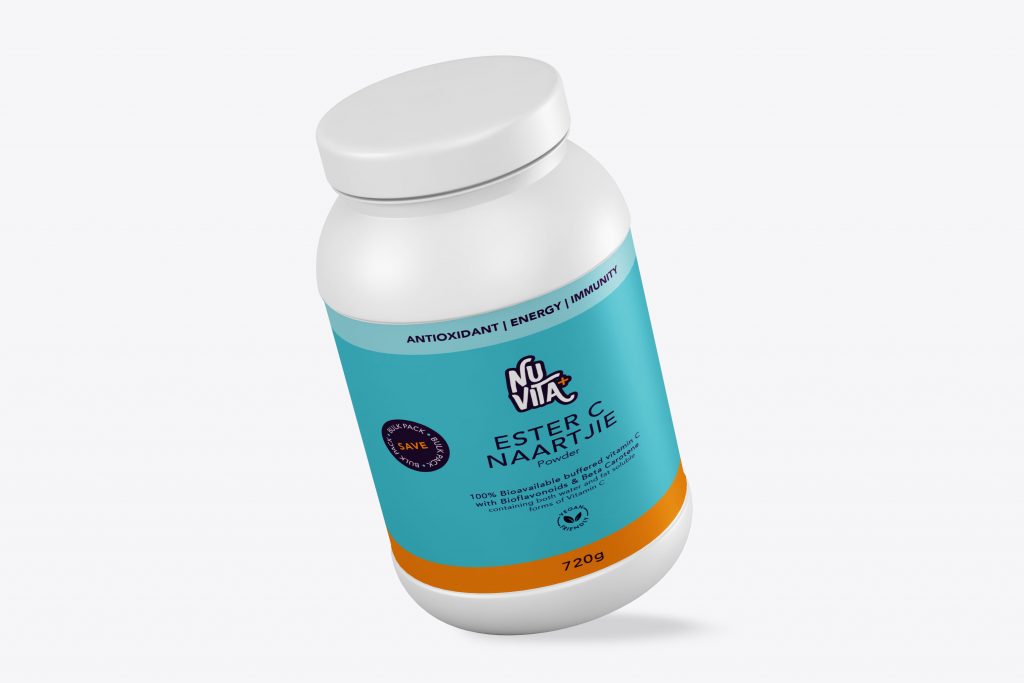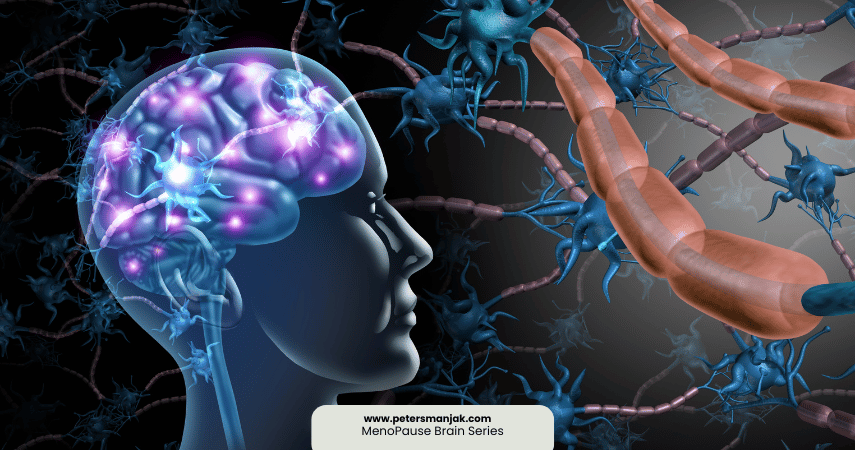Graphene Oxide, Information and Answers for Detox
The Situation

The corona (COVID-19 etc) vaccine is not a vaccine, it is a means for control, both to keep populations in check and keep people suppressed. According to many reports by very well established members of the science community that are becoming more apparent in number, the corona vaccine contains at least 98% graphene oxide, lipid carriers and a piece of viral DNA that is supposed to be used by our own cellular machinery to produce viral proteins for a proposed immunity. Right now the corona vaccine is causing blood clots resulting in strokes and fluid retention in the lungs causing death. The vaccine came very close to nearly killing one of my family members (in laws). He succumbed to taking the vaccine due to pressure and fear. Many people in the US were required to take the vaccine to keep their jobs.
People who have taken the vaccine, and maybe some of the long term continual boosters, need to remove the graphene oxide from their body as it is incredibly dangerous and inflammatory. Adding to the complication and confusion is the fact that some people apparently received a placebo instead of the actual vaccine and there are many variations in the list of ingredients for each of the many vaccines available from individual vaccine manufacturers and no one is really certain about the differences and the complete list of actual contents.
Right now, our biggest concern regarding ingredients in vaccines is the graphene oxide (GO), which is causing death, while there is a potential for an even greater threat as GO absorbs radiation from cell phones and Wifi rendering it more oxidative, destructive and deadlier. As 5G comes on line with its increased magnitude of radiation due to the smaller and more destructive wavelengths, it is going to make the GO more oxidative and inflammatory. Right now, I have this strange feeling I am in the middle of some science fiction move, but this is real. There is information out there and there are answers for detox. We can survive this. Down we go into the rabbit hole. This is the story of graphene oxide in corona vaccines also known as the COVID-19 and sometimes referred to by yours truly as the “corona bologna”.
Graphene oxide (GO) was discovered in 2004 in the UK. It is made by adding a strong oxidizer such as sulphuric acid to graphite. The end result is a one atom thick layer of hexagonal shaped material that is supposed to be the toughest in the world…..sounds great but it does very bad things when it enters into the human body. That is what this article is all about, a summary of scientific information regarding the toxicity of GO and details on how to get it out of the human body. I realize the information is technical and challenging for some not trained in this field so I ask your patience and persistence in understanding the incredible amount of evidence describing what graphene oxide is and what it does when administered to animals and the human body. Time and detail at this point are critical for the survival of, at the very least, millions of people that have taken the COVID-19 vaccine(s).
A more in depth description of the ability of GO to bind metals has been provided by a science paper published in the journal, Molecules in 2020:
“Graphene oxide sheets are negatively charged in aqueous solutions due to the ionization of carboxylic groups and since they contain oxygen atoms with a lone pair of electrons, they are ideal sorbents to bind metal ions both through ionic and coordinative interaction. The adsorbed metal ions can be subsequently eluted with the addition of acid with the H+ competing for the binding site.”
Negative Effects on the Brain
Because GO is a nano sized particle, it has the ability to cross the blood brain and placental barriers. It has been reported in scientific literature that graphene oxide accumulates inside the hippocampus area of the human brain when people are injected with it and this likely contributes to Alzheimer’s like symptoms. The hippocampus is the area of the brain responsible for facial recognition, learning, emotions and new memories. This may explain the short term memory loss experienced by those supposedly affected by the corona virus (COVID-19) that may have been affected by GO instead.
A study published in the journal of Nanobiotechnology in 2016 aptly demonstrated that GO injected into the body of mammals crosses the blood brain barrier and ends up in the hippocampus. In fact, the authors of this study stated that the GO actually damaged the blood brain barrier allowing more “everywhere” toxins such as aluminum and glyphosate to gain access to the hippocampus which results in an increase of symptoms of Alzheimer’s. Anyone unfamiliar with this can read about it in my books, Aluminum Detox, An Easy Solution, and, Mercury The Ultimate Truth And Chronic Disease.
In experiments with animals it has been shown that GO “has a toxic effect on nerve tissue. Indeed, microscopic sections’ analyses revealed that the cerebral and cerebellar cortex’s specific neuronal cells showed degeneration and necrosis” (Rhazouani et al., 2021). This would be an incredibly important finding as currently one out of every three people in the US over the age of 80 years old is going to die from Alzheimer’s and similar neurodegenerative disease. This is expected to increase to one out of every 2 people in the next 20 years. Not surprisingly, “Modern Medicine” states that neurodegenerative disease like Alzheimer’s is caused by old age and there is no cure.
Destruction of arteries, just as the same reported for intestinal damage (described below) due to the toxicity of GO, has been described in research publications, “Besides, bleeding in brain tissue was observed in animals with GO intoxication” (Rhazouani, 2021). Another study (2020) on the effects of GO showed disruption of the neurotransmitters tyrosine, tryptophan, dopamine, tyramine, and GABA, demonstrating neurotoxic effects on locomotion. A separate study from 2020 found that small GO nanosheets delivered to neurons in the hippocampus resulted in disturbing gulatmate availability in the brain.
Damage to the Lungs, Fibrosis, Thrombosis and Pulmonary Edema
Even as far back as 2011 it was reported that graphene oxide administered to experimental animals causes severe damage to the lungs “However, due to high accumulation and slow clearance, GO accumulated in lungs resulted in pulmonary edema, granulomatous lesions, inflammatory cell infiltration, and fibrosis” (Zhang et al. 2011).
Higher amounts of GO in the blood of experimental animals causes granuloma formation in the lungs. A granuloma here refers to an aggregation of white blood cells around a foreign body that has been identified as a threat. According to information published in 2010, higher doses of GO injected into the human body will cause greater amounts of destruction to cells and increased damage to lungs compared to administering lower doses.
In addition to this, GO incites white blood cells known as neutrophils to engulf and encapsulate it, as well as to entrap it in a net, which entangles more cells creating larger sized arterial debris. The ability of white blood cells to engulf GO particles has been shown experimentally to be independent of size (Yue et al., 2012, 350 nm to 2
microns) and so the combination of a heightened inflammatory response as well as high amounts of coagulation creates a big problem with blood clots both in the lungs and the brain. Think of it as pouring a small amount of glue into your car engine, it will stop creating energy, stop recirculating fluids to maintain function, destroy fluid pathways and it will eventually overheat (inflammation) and render the car useless.
Repeated analysis of data continually demonstrates that pulmonary edema results from intravenous injection of GO with a GO particle diameter of 100 nm causing lung damage. Moreover, smaller GO particles can penetrate the epithelial lining of the lungs and enter interstitial tissue. This would increase the inflammatory response and fluid accumulation in the lungs.
An interesting point made by authors in a review on GO from 2021 was that the prothrombotic nature of the GO depends on the distribution of the surface charge. When GO is administered to the lungs it causes massive amounts of damage to lung tissue and penetrates the lining of the lungs and this results in increased inflammation. The same authors from the 2021 literature review study had this to say “These GO nanosheets disrupted the alveolar-capillary barrier, allowing inflammatory cells to infiltrate the lungs and stimulate the release of proinflammatory cytokines”. This again would compound the problem of pulmonary edema or fluid retention in the lungs.
In 2012 scientists found that GO administered to mice caused platelet aggregation and blood clots in the lungs through the effect of GO causing the release of calcium “Here we report for the first time that atomically thin GO sheets elicited strong aggregatory response in platelets through activation of Src kinases and release of calcium from intracellular stores”.
Over the years I was always encouraged when scientists specifically stated in their published papers that we need to be careful how certain substances are applied to humans because of toxicity. There are many quotes I could list here that would make this article much longer but suffice to say that this one from back in 2013 (Li et. al.) on the toxicity of GO in regards to the application to experimental animals is very typical “SPECT imaging showed that GO was mainly localized in the lungs with minor presence in other organs such as liver and intestines suggesting that GO can pass through the air-blood barrier. These results show that GO possesses severe pulmonary toxicity and appropriate steps must be taken to minimize human exposure to GO sources, especially during large-scale production”.
Graphene Oxide Effects on Unborn Children
Knowing that GO easily passes the placental barrier, a disturbing question I had to ask myself when researching all of this information is: what happens to fetal tissue when it comes in contact with graphene oxide? According to a scientific paper published in 2021 in the journal Cells, graphene oxide causes “loss of cell viability, production of ROS, increasing leakage of LDH and level of MDA, increasing expression of pro-apoptotic genes, and decreasing expression of anti-apoptotic genes”. The authors made this statement in regards to mammalian fetal tissue. This statement refers to increased oxidation and inflammation, destruction of cells and cell membranes and the creation of free radicals. In a separate study from 2015, pregnant mammals given GO showed reduced body weight and delayed offspring development compared to mammals that did not receive GO.
A literature review published in 2021 concurred with the limited previous findings by stating “Regarding the placental barrier, one study suggested that the placenta does not provide a barrier against the transfer of nanoparticles to the fetus, specifically against the distribution of nanoparticles in and to the fetus” A separate recent study on vertebrates concluded that GO caused cardiovascular defects in developing embryos.
Although there are very few published papers discussing the dangers of GO in association with developing human embryos, there are two things that are certain, it is going to cause problems with fetal development resulting in an increase in miscarriages, and, pregnant women are being injected with many corona vaccines and boosters. The CDC website encourages pregnant people (I don’t know what they mean by “pregnant people” and I don’t want to know) to get the vaccine to protect themselves from the delta corona variant. I suppose the omega variant will be landing shortly, followed by the maybe devastating alpha grande or some such term to increase fear and compliance.
Graphene Oxide is Magnetic and Conducts EMF
Graphene oxide is a semiconductor and it is magnetic. Published information has discussed the fact that GO readily absorbs 0.5 to 40 gigahertz EMF , which covers all the 4G, 5G, Wifi and microwave wavelengths. Once GO absorbs the EMF, it becomes more oxidative and forms more free radicals, increasing the need for glutathione to be used more as an antioxidant to protect cells and less as a chelator. So in other words, once graphene oxide gets into your system, it creates conditions that prevent it from being excreted. Mercury in the human body does the same thing by damaging the organs responsible for excreting it from the human body, the liver and kidney.
I have listened to many first-hand accounts discussing how GO transforms the body into a conductor of EMF (electromagnetic fields) and this can be measured with EMF meters. Further to this, I have seen EMF increase when vaccinated people grab on to an insulated electric cable. You can test the accuracy of GO causing a vaccinated body to become magnetized by placing metal objects on people and watch how the metal sticks to human bodies that contain GO, like a magnet to a fridge. Then see how the EMF field increases and decreases when GO loaded people (vaccinated) get closer and further away from sources of radiation like wifi and electrical fields and insulated electric cables.
GO Concentration Affects Toxicity When Administered Orally
Results from biomedical research have concluded that GO taken orally in lower doses may be more destructive to people than higher doses. This is due to the fact that when higher doses are taken orally, GO may bind to itself, while lower doses taken orally are more likely bind to intestinal tissues. Because GO has sharp edges it seems to destroy tissue and in an experiment conducted in 2015, scientists concluded that ingested GO causes “severe damage to the gastrointestinal tract”. In addition to this, animals that received orally administered GO had verifiable intestinal damage with shorter villi (villi are intestinal projections that are important in increasing surface area for the colonization of bacteria and increasing the absorption of nutrition).
In an opposing view, a literature review published in 2021 had described the concentration toxicity effect of GO as “GO with a dose less than 20 μg/mL did not exhibit toxicity to human fibroblast cells, and the dose of more than 50 μg/mL exhibits cytotoxicity such as decreasing cell adhesion, inducing cell apoptosis, and entering into lysosomes, mitochondrion, endoplasm, and the cell nucleus” Meaning that at higher concentrations, administered GO cuts up cells and enters into cellular machinery (genetic mutation) and kills cells. This would create more arterial debris, contributing to the increase in strokes in people that have received certain vaccines.
The Method of Processing Can Make Graphene Oxide More or Less Toxic
Chemical reduction of GO has been reported to be less toxic than thermally reduced GO, however, results of this on the whole are contradictive. Reduction is a gain of electrons (increased negative charge) and it can change a compound to create a different version of the compound with an altered chemical state. Reduced GO with an attached nitrogen group has been reported to be less toxic. No one really knows whether GO in vaccines is more reduced or oxidative but from the results of the damage it causes in the human body, it is likely much more oxidative. In contrast to this a report in 2011 stated the opposite “These results suggest that hydrophilic (more oxidized) graphene nanoparticles may be more cytocompatible and efficient intracellular delivery systems”. I did find several examples of literature reviews comparing confounding results in regards to whether reduced or oxidized graphene was more toxic to cells. When the vaccine manufacturers finally admit to the inclusion of GO in the COVID-19 vaccines maybe we will find out for sure.
Reduced Energy Production through Mitochondrion Destruction
When GO enters cells instead of destroying them it interferes with cellular machinery by increasing oxidation, creating free radicals which results in destroying mitochondria. This was stated in a 2016 literature review on GO toxicity:
“Upon cellular internalization, GO interferes with the electron transport system, induces overproduction of H2O2 and hydroxyl radicals”, which in turn “activates mitochondria-induced apoptosis”. In other words it interferes with energy production by destroying the part of the cell that creates energy.
In a 2021 literature review it was stated that inflammation created by GO was the result of an “imbalance between free radicals and antioxidants. ROSs act as secondary messengers in many intracellular signaling cascades and lead to cellular macromolecular damage, such as degradation of membrane lipids, DNA fragmentation, protein denaturation, and mitochondrial dysfunctions”.
The Shape and Size of the Graphene Oxide Particle Indicates Where It Will End Up and the Degree of Toxicity
Different shapes of GO can cause different levels of inflammatory responses. The micro dimensions of individual GO particles can affect the toxicity to human cells. For example, a literature review published in 2016 described single layered GO sheets being more toxic due to the increased number of sharp edges compared to larger sheets which contain less edges, resulting in less cell membrane damage. Another quote from a science paper sums up the effect of the size of the GO particle on the inflammatory response “Furthermore, the micron sized GO induced a stronger inflammatory response and release of cytokines. These results suggest that cytokine release and inflammatory response are dependent on the size of GO sheets” (Yue et al. 2012).
The size of GO particles that are injected into the human body indicate where it will end up. Smaller GO particles with a size of 10-30 nm (nanometers) have been found to accumulate in the liver and spleen while larger particles from 30-800 nm will end up primarily in the lungs. The reason for this is that different size particles have different affinities for different tissues. This does not seem to matter whether the GO is inhaled or injected into muscle tissue. More research showed that experimental animals that have inhaled graphene oxide develop lung fibroses (scarring) within 21 days of application. All researchers working in the field of GO toxicity all agree that GO accumulation in the lungs is the hardest to remove. One study actually revealed that lung fluid can actually alter the shape of the GO particle creating another level of complexity.
In most of these toxicology studies, there is always increased inflammation, free radicals and cell death when graphene oxide is administered to lab animals. Larger particles tend to cause more inflammation as they are harder to get rid of while smaller particles can be filtered out by the kidneys but cause kidney damage in the process within 24 hours of GO administration (Sasidharan et al. 2011).
GO particles as small as 3.8 nm have been reported to be less toxic (20% mortality) to human stem cells compared to larger GO particles of 100 nm (95% mortality). Moreover, larger pieces of GO (780 nm) have been determined to cause a 50% increase in oxidative stress (ROS) in cells exposed to it compared to smaller GO particles of 160 and 430 nm in size. In contrast, a study published back in 2011 stated the opposite with smaller GO particles causing more cytotoxicity and oxidative stress. An extensive literature review on GO toxicity from 2016 stated that smaller GO particles are going to penetrate cells while larger GO particles, some of which are referred to as nano ribbons seem to be more destructive to cell membranes.
The degree of GO toxicity to cells also depends on what is attached to it. Back in 2011, a published paper in the journal Nanoscale describes this succinctly, “Pristine graphene was found to accumulate on the cell membrane causing high oxidative stress leading to apoptosis, whereas carboxyl functionalized hydrophilic graphene was internalized by the cells without causing any toxicity.” Pristine GO here refers to GO that does not contain a carbon-hyrdrogen-oxygen group attached to it. In contrast to this another paper discusses the increase in toxicity of GO with an attached carbonyl group “the increased cytotoxicity of GONRs (GO nano ribbons) was attributed to the presence of a greater amount of carbonyl groups” (Chang et al, 2014).
Graphene Oxide is Carcinogenic
A recent published study in 2021 stated that GO is a known carcinogen and this is the biggest problem associated with toxicity when GO is administered to the human body. Reduced and oxidized GO caused genetic damage to retinal epithelial cells, with the reduced form of the GO causing less destruction to cells overall (reduced GO contains less oxygen groups on the edges of the GO molecule). The authors suggested that because GO readily crosses the cell membrane it can easily damage nucleic acids, important cellular lipids and proteins. Information from an older study in 2013 described GO as being mutagenic at the molecular level as well as altering gene expression. A further study (2017) showed “chromosomal aberrations in the bone marrow cells” of mammals receiving a GO treatment. A study of the effects of GO in mammals in 2020 again reported “genomic instability, mutagenicity, and oxidative stress in the liver and brain tissue”.
Another study concurred with these findings by stating “the cytotoxicity of rGONRs (reduced graphene oxide nano ribbons) was attributed to DNA fragmentation and chromosomal aberrations (observed even at low concentrations of ~ 1 µg/ml after 1 hour) due to penetration of rGONRs inside the cells”.
Conclusion and Detox
The 2021 literature review referred to many times in this document stated that small GO particles could be degraded by cellular machinery (lysozymes) and rendered non-toxic, being removed by the kidneys, while larger GO particles, caused oxidative stress, an increase in free radicals and a decrease in glutathione. Particles of GO that accumulate in the liver can be eliminated through the bile duct attached to glutathione like most toxins. This was relayed in a 2021 literature review of GO toxicity. Pegalated GO particles have been found to accumulate primarily in the liver and potentially become less toxic.
Larger GO particles that end up in the lungs are incredibly more difficult to remove as they have an affinity for lung tissue, both administered orally and through IV. Reducing fluid in the lungs is challenging and it is best to excrete larger GO particles in the blood before they circulate and find the tissue they have the most affinity for, which is the lungs.
It is grossly apparent that multiple forms, different concentrations and sizes of graphene oxide are destructive when administered to the human body. The primary outcomes of the application of GO have repeatedly shown that it causes coagulation of blood cells and platelets resulting in strokes, destruction of cells, pulmonary fibrosis and edema. In addition, other information available on the internet (Quinta Columna) shows that people can detox from GO by binding and chelating it with N-acetyl-cysteine and glutathione, administered both orally (liposomal form) or through IV application which can reverse the side effects of the vaccine such as coagulation and induced inflammation. Separate individual sources claim that low glutathione levels in the human body resulting from oxidative stress, toxins and a depressed immune system make people more vulnerable to GO toxicity and chronic disease. Because N-acetyl-cysteine is a regularly consumed amino acid (not available to buy as a supplement on Amazon, big surprise) and glutathione is normally made in the body of healthy individuals, and, these supplements are readily available and very effective, NAC and glutathione are the answers. However, there are other very effective products that can be used for the same purpose.
Sources and Further Reading
Absasidharan et al. 2011. Differential nano-bio interactions and toxicity effects of pristine versus functionalized graphene. Nanoscale. Jun;3(6):2461-4.
Chang et al. 2014. Graphene oxide nanoribbons exhibit significantly greater toxicity than graphene oxide nanoplatelets. Nanoscale. 2014;6(18):10792–10797
Fu et al. 2015. Effects of graphene oxide on the development of offspring mice in lactation period. doi: 10.1016/j.biomaterials.2014.11.014. Epub 2014 Dec 3.
References
Lalwani, G. et al. 2017. A Toxicology of Graphene-Based Nanomaterials. Drug Deliv Rev. 2016 Oct 1; 105(Pt B): 109–144
Manousi et al. 2020. Sample Preparation Using Graphene-Oxide-Derived Nanomaterials for the Extraction of Metals. Molecules. 2020 May; 25(10): 2411
Mendonça et al. J. 2016. Reduced graphene oxide: nanotoxicological profile in rats Nanobiotechnol 14:53 DOI 10.1186/s12951-016-0206
Ou et al. 2021. Oxygen content-related DNA damage of graphene oxide on human retinal pigment epithelium cells. J Mater Sci Mater Med. 2021; 32(2): 20.
Rhazouani, et al. 2021. “Synthesis and Toxicity of Graphene Oxide Nanoparticles: A Literature Review of In Vitro and In Vivo Studies”, BioMed Research International, vol. 2021.
Sasidharan et al. 2011.. Differential nano-bio interactions and toxicity effects of pristine versus functionalized graphene. Nanoscale.;3(6):2461–2464.
Singh et al. 2011. Thrombus inducing property of atomically thin graphene oxide sheets. ACS. Jun 28;5(6):4987-96.
Wang et al. 2011. Biocompatibility of Graphene Oxide. Nanoscale Res Lett volume 6, Article number: 8.
Yue et al. 2012. The role of the lateral dimension of graphene oxide in the regulation of cellular responses. Biomaterials. 2012;33(16):4013–4021
Zhang et. al. 2011. Distribution and biocompatibility studies of graphene oxide in mice after intravenous administration. Carbon. 2011;49(3):986–995









